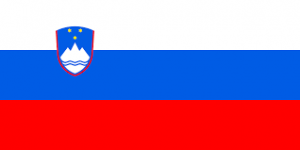Language/Slovenian/Grammar/Adverbs-and-prepositions
As a Slovenian language teacher with 20 years of experience, I'm excited to dive into the topic of adverbs and prepositions in Slovenian. Adverbs are essential parts of speech that modify verbs, adjectives, or other adverbs, while prepositions indicate how different words are related to each other in a sentence. By mastering adverbs and prepositions, students will be able to express themselves more accurately and effectively in Slovenian.
Adverbs
Adverbs serve to modify verbs, adjectives, or other adverbs in a sentence. They often provide information about time, manner, place, degree or frequency. Most adverbs in Slovenian are formed by adding -o or -e to an adjective or by adding -če or -sko as a suffix. Here are some examples:
| Slovenian | Pronunciation | English |
|---|---|---|
| hitro | 'hitro' | quickly |
| glasno | 'glasno' | loudly |
| počasi | 'po-cha-si' | slowly |
| zelo | 'ze-lo' | very |
Notably, some adverbs change form according to the gender of the noun, adding -a for feminine, -ega for masculine, and -o for neuter nouns. For example:
| Slovenian | Pronunciation | English |
|---|---|---|
| tiho | 'ti-ho' | silently (feminine) |
| tihega | 'ti-he-ga' | silently (masculine) |
| tiho | 'ti-ho' | silently (neuter) |
Keep in mind that many adverbs in Slovenian are not derived from adjectives and have irregular forms. For instance:
| Slovenian | Pronunciation | English |
|---|---|---|
| že | 'zhe' | already |
| sploh | 'sploh' | at all |
| kako | 'ka-vo' | how |
| kaj | 'kai' | what |
Prepositions
Prepositions are essential for connecting words, phrases, and clauses in a sentence. In Slovenian, as in many languages, prepositions are used to denote specific relationships between words, such as time, location, direction, and manner.
Some common prepositions in Slovenian and their meanings include:
- v - in, into
- na - on, onto
- iz - out of
- ob - at the time of, by means of
- med - between
- pod - under
- nad - over
- s - with
- brez - without
Here are some examples:
- Na mizi leži knjiga. (The book lies on the table.)
- Vstopim v hišo ob pol osmih zvečer. (I enter the house at 7:30 p.m.)
- Grem iz hiše. (I go out of the house.)
- Moj prijatelj pride med sedmo in osmo uro zvečer. (My friend comes between 7 and 8 p.m.)
- Sedim pod drevesom. (I sit under the tree.)
- Letalo leti nad oblaki. (The plane flies over the clouds.)
- Grem s prijatelji na plažo. (I go to the beach with friends.)
- Nisem šel na izlet brez denarja. (I didn't go on a trip without money.)
It is important to note that some Slovenian prepositions can have multiple meanings depending on context. For example, the preposition "v" can mean "in" or "into," but it can also indicate an action taking place at a specific time or date, such as "grem v ponedeljek" (I'm going on Monday). In these cases, the exact meaning often depends on the context and the accompanying words or phrases.
Adverbs and Prepositions in Idioms
As with any language, Slovenian has many idiomatic expressions that incorporate adverbs and prepositions. These expressions often convey a specific meaning that may not be immediately apparent from the individual words. Here are some examples:
- Počasi ampak zanesljivo. (Slowly but surely.)
- Brez dela ni kruha. (Without work, there is no bread.)
- Na vsak način. (At any cost.)
- Včasih manj pomeni več. (Sometimes less means more.)
- Od danes naprej. (From today onward.)
- Pred časom. (Some time ago.)
- Z obema nogama na tleh. (With both feet on the ground.)
- Po svoje. (In one's own way.)
When encountering these idiomatic expressions, it is important to learn their meanings in context rather than relying solely on the individual words of the sentence.
As you can see, both adverbs and prepositions are essential parts of the Slovenian language. By mastering them, students can improve their ability to express themselves accurately and effectively. Keep practicing and incorporating these parts of speech into your daily communication, and you'll soon see your Slovenian skills improving. Srečno! (Good luck!)

